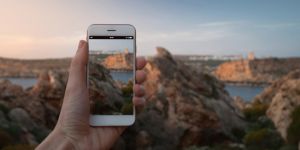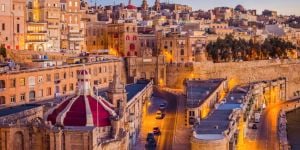Malta is a top destination for foreign nationals looking for a change in lifestyle for their families and themselves. With attractive corporate taxes, new professional opportunities await many expats in Malta. Additionally, moving to a country that has more than 7,000 years of documented history has many bonus features.
Here are some quick facts about Malta to get you started:
- The archipelago is located centrally in the Mediterranean, providing easy access to Europe, Africa, and the Middle East. Its immediate neighboring countries are Italy, Tunisia, and Libya.
- Malta enjoys 300 days of sunshine each year.
- It is easy to find accommodation in Malta, even though rents have been rising in the past 3 years in comparison with the rest of Europe.
- The Maltese economy is stable.
- The country is a member of the European Union.
- The country is rich in historical and archeological treasures.
- You can enjoy various types of leisure activities, such as the famous Malta Jazz Festival which is held every year in July.
- More and more students have been choosing Malta to complete their higher studies.
Geography
Malta is found in the middle of the Mediterranean Sea. It consists of three islands; Malta, Gozo (also known as Ghawdex), and Comino (also known as Kemmuna). Stretching over a total of 316 km², the archipelago has a population of 493,559 inhabitants (2019 estimate).
Malta's capital city is Valletta, which is a UNESCO World Heritage Site and the smallest capital city in the EU.
Economy
Malta's economy is primarily focused on foreign trade, manufacturing, tourism, and financial services.
The iGaming industry has in recent years grown tremendously in Malta. Film production is another growing industry with feature films like Gladiator, Troy, World War Z, The Count of Monte Cristo, and Captain Philips all choosing to film in Malta.
With low corporate tax and a productive, multilingual labour force, Malta's economy is considered to be advanced and highly industrialised.
Agricultural production is quite low ' Malta only produces about 20% of its food needs.
History and policy
Malta's history is rich, spanning thousands of years and claiming multiple cultural influences.
Archaeological finds indicate that the Maltese islands have been settled since 5200BC. Some of the world's oldest freestanding structures are located here ' older than Stonehenge, Newgrange, and the Pyramids at Giza. The Phoenicians and Romans claimed the islands at some point over the next several thousand years.
In 58AD, Paul the Apostle was shipwrecked and washed ashore in Malta. He stayed on the island preaching Christianity, which remains the predominant religion in Malta today.
Malta was under Byzantine rule for several centuries until the Arab-Byzantine Wars in the 800s AD. As a result of these battles over Mediterranean territory, the Maltese islands were left essentially uninhabited for over 100 years.
By 1048AD, Muslims from Sicily recolonised Malta, introducing irrigation, new agriculture, and ' perhaps most importantly ' the language that would evolve into current-day Maltese.
The Normans and the Kingdom of Sicily took over the islands shortly thereafter, reintroducing a Catholic majority. Malta became part of the Holy Roman Empire under Spanish control. In 1530, the Knights Hospitaller (also known as the Knights of St. John and subsequently the Knights of Malta) were allowed to settle in Malta after being driven out to Rhodes by the Ottoman Empire.
The Knights of St. John were to have an enormous impact on current-day Malta. They withstood the Great Siege of 1565, repelling Ottoman efforts to take the islands as a launching point for invading Southern Europe. In gratitude, the Spanish crown sent monetary gifts to the Knights for stopping the Ottoman advance and therefore protecting the rest of Europe from attack.
With that financial support, the Knights of St. John planned and built the new capital city of Valletta. For the last 500 odd years, Malta has been under Napoleon's control, British protection, and under constant bombardment from German aircraft during WWII.
In 1964, Malta finally gained independence. For 10 years, the country retained Queen Elizabeth II as the Head of State, until 1974 when Malta declared itself an independent republic.
Malta officially joined the European Union on the 1 May 2004 and joined the Eurozone on 1 June 2008, adopting the Euro as the official currency.
Fauna and flora
Malta is an arid country without a large variety of endemic flora, unlike other neighbouring Mediterranean countries. Berries, grapes, and olives, as well as carobs and figs, can be found everywhere.
Maltese fauna is similarly limited in diversity, although you will find rabbits, hedgehogs, weasels, bats, and lizards. And, don't forget the marine life ' a variety of aquatic species can be spotted in Maltese waters.
Good to know:
When making local phone calls, remember to dial '00356' beforehand.
Maltese electrical outlets are the same as British outlets, utilising the 3-prong Type G plug at 240 volts.
Useful links:
We do our best to provide accurate and up to date information. However, if you have noticed any inaccuracies in this article, please let us know in the comments section below.






